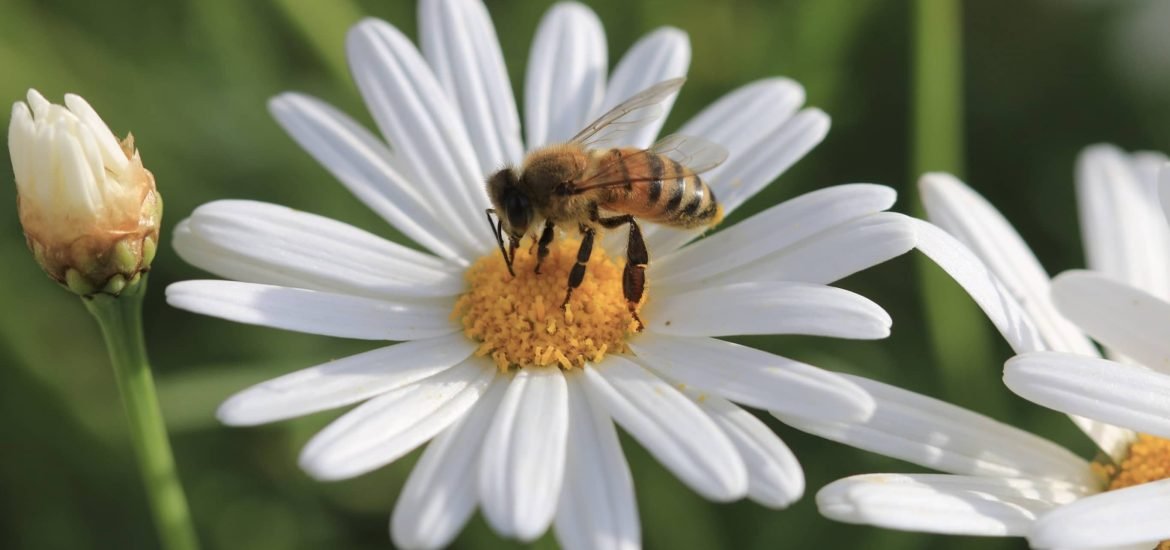
In cities and towns, private home gardens are the most critical food source for pollinating insects, such as bees and butterflies, according to new research published in the Journal of Ecology (1). Researchers from the University of Bristol compared the production of nectar coming from different types of urban green areas, such as public parks and domestic gardens. It turned out; urban locations are just as good as rural areas to support pollinators, with domestic gardens producing a staggering 85% of all nectar produced.
With increasing industrialised farming to feed an increasing world population, vast areas of land have been converted to agriculture, destroying many natural flower-rich habitats. As a consequence, the numbers of pollinators – which are vital for plant reproduction – are dwindling. A loss of flowers means a loss of the nectar that makes up their most crucial food source.
However, not all is lost. These insects may have a possible way out: highly urbanised cities and towns. It’s easy to imagine these locations as unsuitable for insects, but it turns out these urban areas can actually support diverse pollinator populations.
A group of researchers from the University of Bristol, along with colleagues from Cardiff, Edinburgh, Northumbria and Reading, measured the production of nectar in various urban locations to compare with rural areas. Areas measured included domestic private gardens, allotments and public parks, as well as nature reserves and cemeteries. Supported by the Royal Horticultural Society, the team assessed nectar production in four UK towns and cities: Bristol, Edinburgh, Leeds, and Reading.
Measuring nectar is a fiddly job
Measuring nectar wasn’t easy, but using a thin glass capillary – which is supposed to copy the insects’ tongue – the team managed to extract and measure the volume of nectar produced in each flower. These were microscopic volumes, sometimes less than a hundredth of a raindrop.
To calculate the sugar concentration in nearly 200 species of plants, researchers used a refractometer. This measures the amount of light that can pass through a solution, which is proportional to the amount of sugar dissolved. Nectar is usually around 60% sugar, which is the same as putting about 100 spoonfuls of sugar in your coffee.
The team found that urban areas shouldn’t be dismissed quickly when it comes to diversity and nectar production. In fact, they found more types of flowers in towns than in more rural settings. This is a perfect scenario to attract and support different kinds of pollinators, which have different preferences when it comes to flowers.
It’s all about the gardens
Not surprisingly, not all urban areas can produce the same amount of nectar. Considering that domestic gardens only cover about 30% of all area, they’re responsible for around 85% of all nectar in the towns and cities studied. “We expected private gardens in towns and cities to be a plentiful source of nectar but didn’t anticipate the scale of production would be to such an overwhelming extent. Our findings highlight the pivotal role they play in supporting pollinators and promoting biodiversity in urban areas across the country,” said ecologist Nicholas Tew.
In practical terms, this means that for every 10g of urban nectar, over 8g came from private gardens. With these results, it’s reasonable to state that domestic gardens are vital to support pollinators in cities and towns. Gardeners must be aware that every decision they make regarding their garden is critical to support bees, butterflies and other pollinators in the area.
“Ways to do this include planting nectar-rich flowers, ensuring there is always something in flower from early spring to late autumn, mowing the lawn less often to let dandelions, clovers, daisies and other plant flowers flourish, avoiding spraying pesticides which can harm pollinators, and avoiding covering the garden in paving, decking or artificial turf”, Tew explained.
(1) Tew, NE, Memmott, J, Vaughan, IP, et al. Quantifying nectar production by flowering plants in urban and rural landscapes. J Ecol. 2021; 00: 1– 11. https://doi.org/10.1111/1365-2745.13598